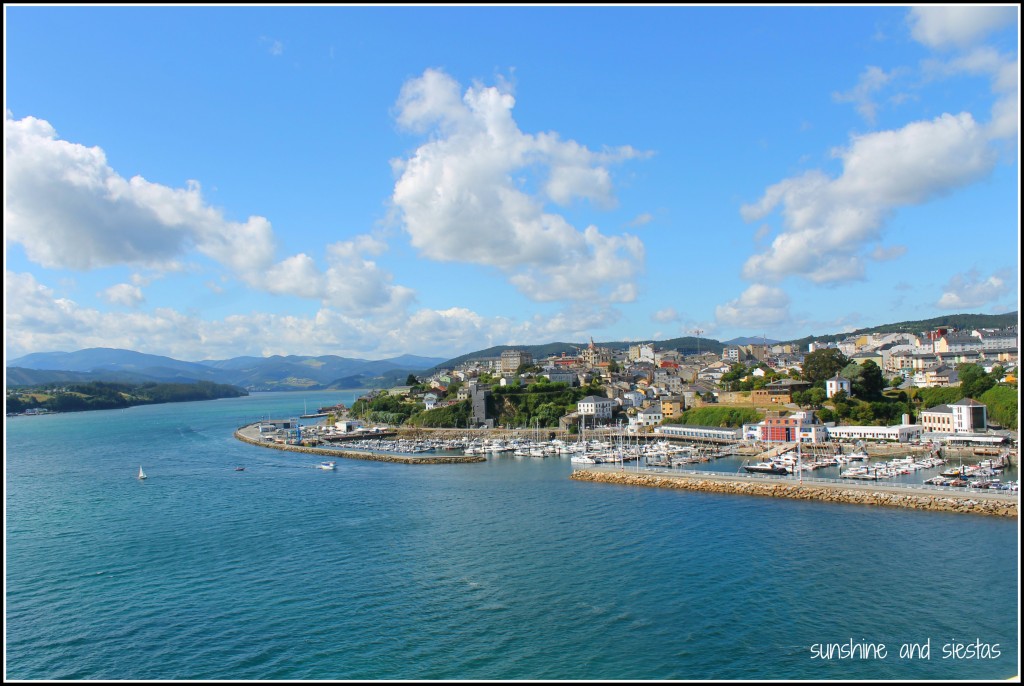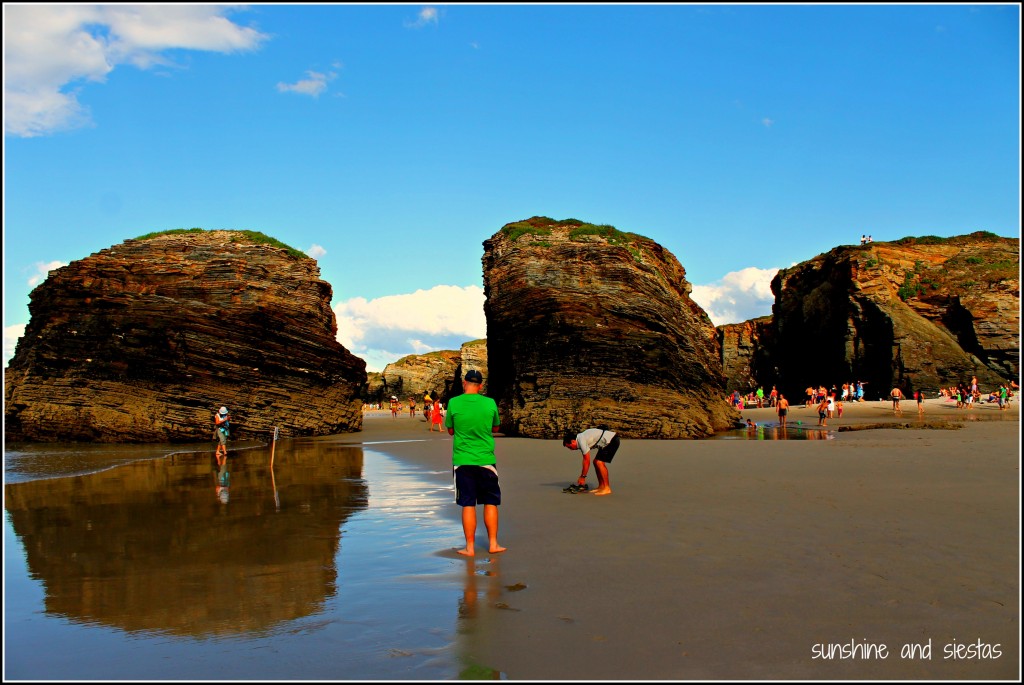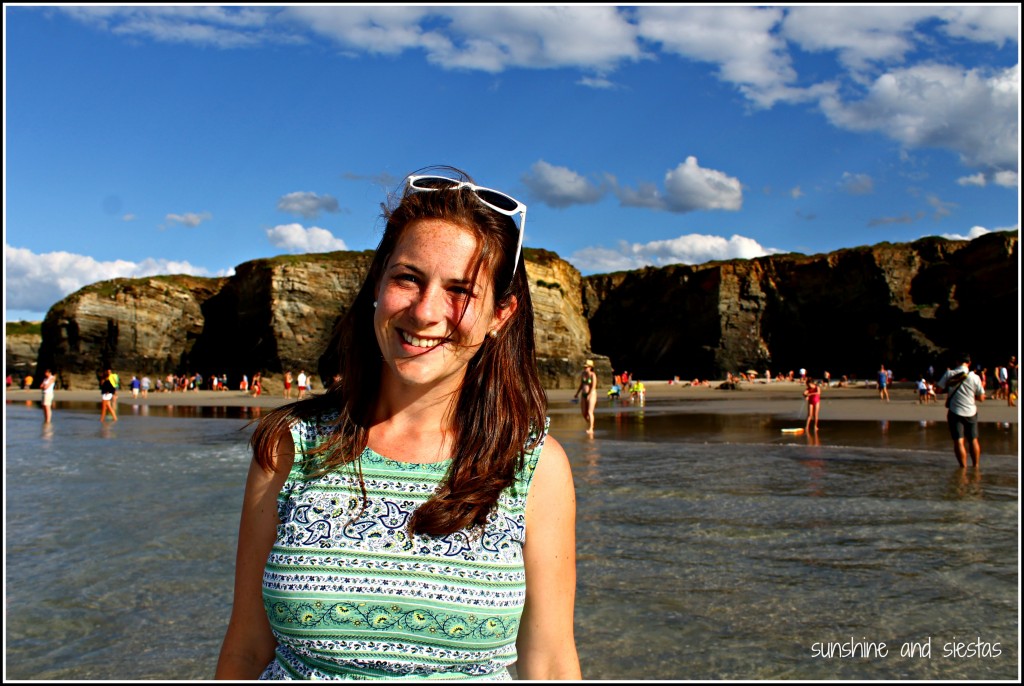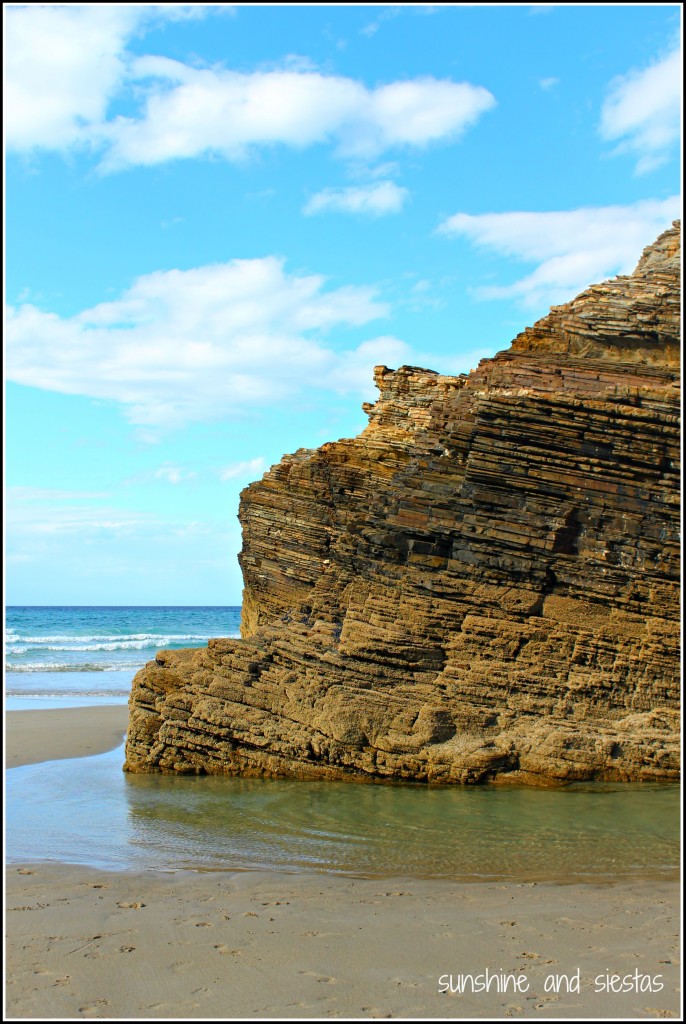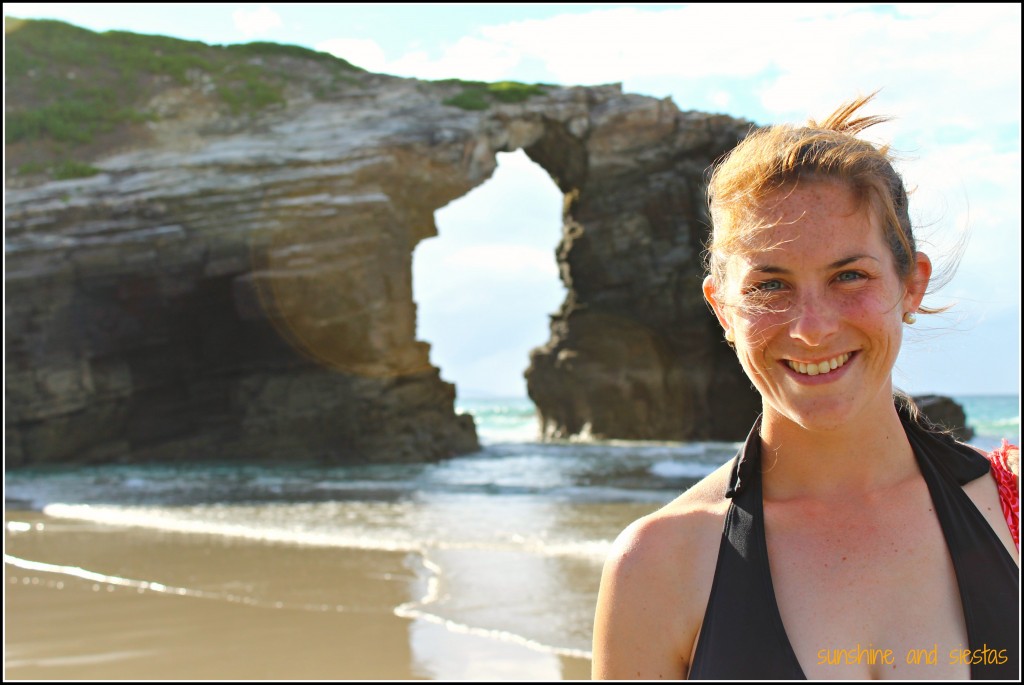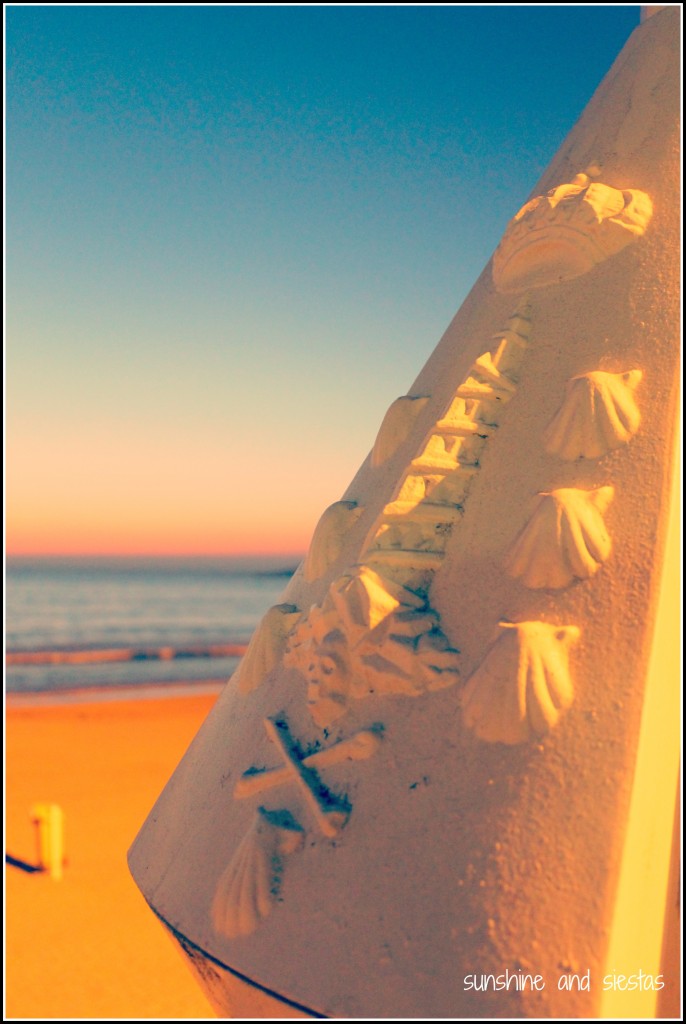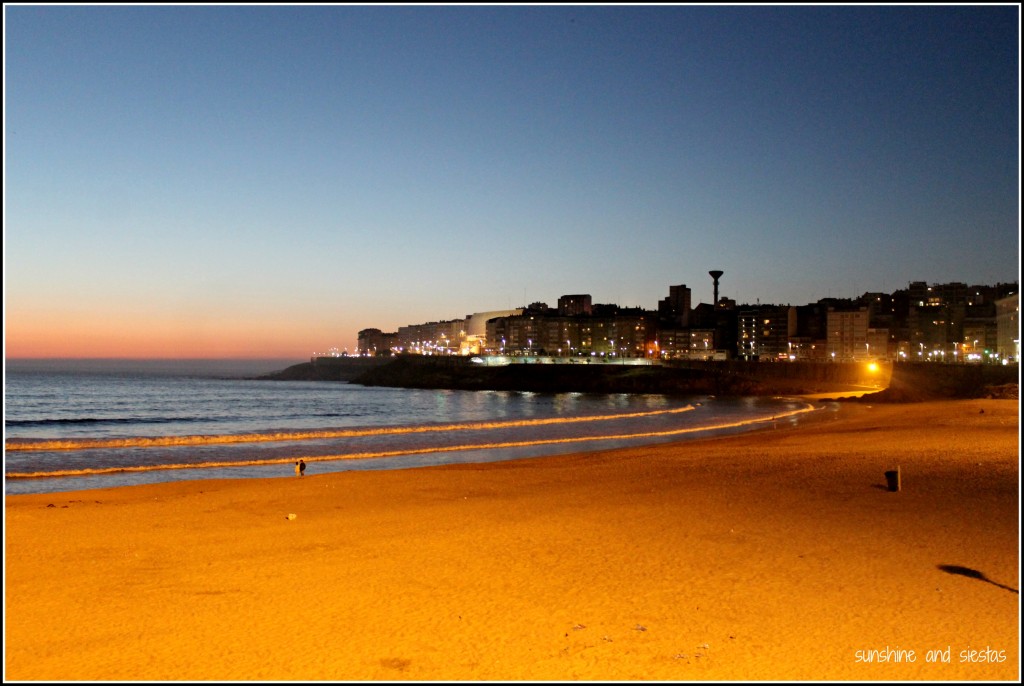After my disappointing jaunt to the ‘Most Beautiful Village in Spain,’ I had even higher expectations for the ‘Most Beautiful Beach in Spain,’ Playa As Catedrais. Arriving to Ribadeo, the first town in Galicia along the Camino de Santiago del Norte, we were exhausted and our muscles needed relaxing – we raced to the pilgrim’s inn on the quay for a bed in the small, cramped place.
Crossing Puente dos Santos, a 600m-long bridge over the Eo River (lo juro), we got a first glimpse of Galicia from the road. The town spilled down a gentle slope towards the Ría and out to the sea, and the pilgrim’s inn was located right on its banks, next to a private beach.
After a splurge on lunch at La Botellería, Iván woke me up from a deep sleep, and we caught a cab with Sandrine and Mikel towards the beach. Iván had called the local government to see when the tide would roll out, allowing us to walk along a pristine beach that spends half the day covered in water.
Walking down a set of aluminum stairs, the flat, horizontal beach stretches out before you. The waters were calm, so we waded out into the surf to rest our aching feet for a while. Being on the Cantabric Sea, the water was freeeeeeezing, but it’s honestly the best thing for your feet after 130km.
Las Catedrales, or As Catedrais in local tongue, is actually called Praia de Aguas Santas, but the soaring rock formations and arches appear to be flying buttresses. When the low tide is in, shallow pools form under the rocks and you can see mussels and goose barnacles growing along the crags. The whimsical rocks have been carved by years of erosion from the wind and salt water, and half of the beach gets covered up in high tide as proof!
If you go: The beach is a 13€ cab ride from Ribadeo’s town center and the albergue. Be sure to check when low tide occurs, as this is when you can see the rock formations from below. There are lifeguards, a full-service restaurant and a souvenir shops located at As Catedrais.
What’s your favorite beach in Spain? Beach season may be over, but visiting in winter means fewer crowds and cheaper food!
